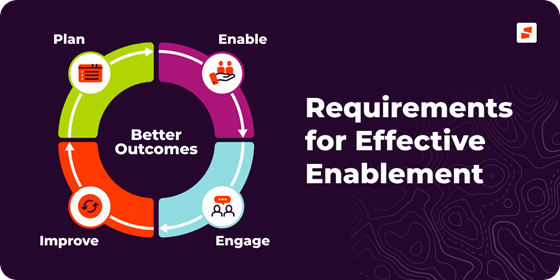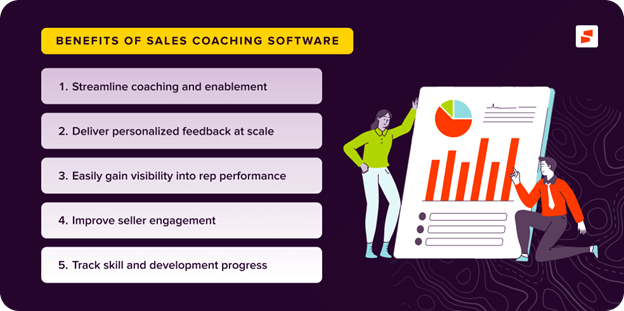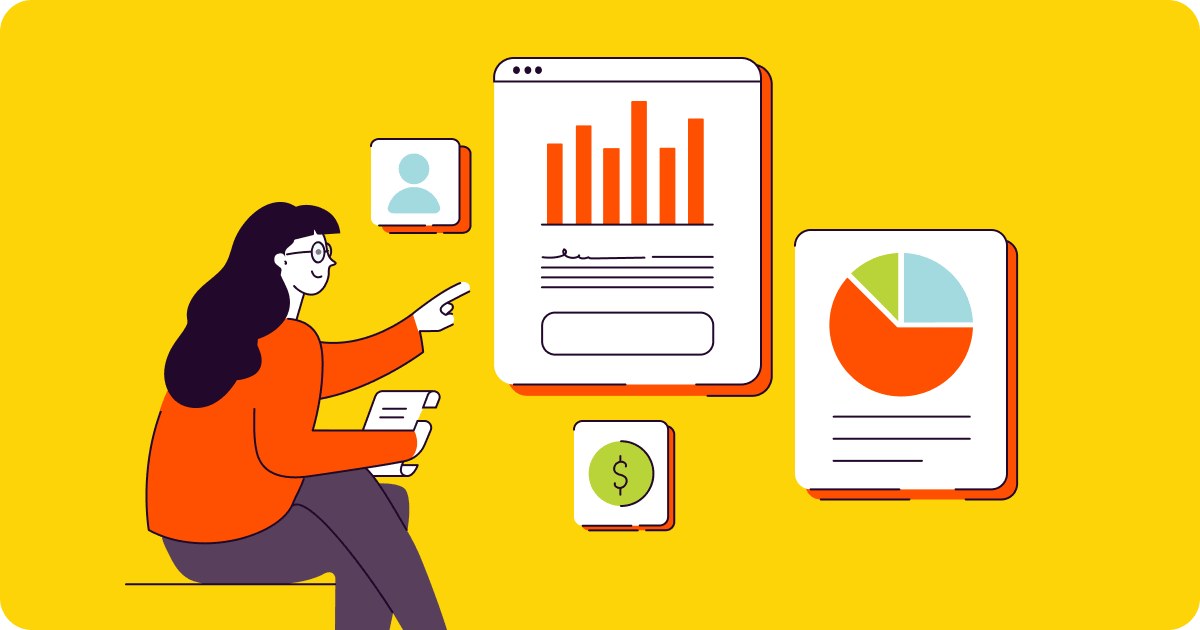As a new year begins, it seems like the “gurus” start speaking up with their top hacks for success.
From how to get better sleep to how to be more productive at work, the advice feels endless.
However, in the sea of suggestions we’ve seen, one bit of advice stands out — 2024 is the year to develop a world-class sales enablement framework. After all, according to The 2023 Value of Enablement Report, 81% of revenue professionals say that having quick access to information and/or content helps them prepare for client meetings and presentations and succeed in their roles. This “quick access” simply doesn’t happen without the proper systems in place.
That’s why a solid sales enablement framework lies at the heart of an excellent sales enablement strategy. It serves as the blueprint that defines how you’ll empower your sales team with the resources, tools, and knowledge they need to succeed.
The goal of establishing a framework is to enhance the productivity and performance of your sales force.
There are four stages to follow when building a sales enablement framework:
- Plan
- Enable
- Engage
- Improve
In this blog, we dive into how you can build a framework that lasts and scales as your team evolves.

Stage 1: Plan your sales enablement framework
Imagine your sales enablement strategy as your house — the framework is the foundation.
Here’s what’s involved:
- Define your goals and objectives: First, ensure your sales enablement framework supports your business and sales enablement goals.
- Assess the current state of your revenue teams: Next, take a look at your current team. What are their strengths and weaknesses? What knowledge gaps need attention? Do they have the right tools and resources? Gather feedback from the team (and maybe even a few trusted customers) on the current sales process.
- Design your framework: Make sure all of your GTM counterparts understand (and are bought into) your sales methodology. This is a great time to determine the essential collateral and training your team needs. In addition to the collateral, it’s important to understand if you’ve got the right sales enablement platform in place.
- Build a measurement plan: You can’t manage what you can’t measure. Develop KPIs and processes to measure within your sales engagement plan.
With goals set and a comprehensive framework established, you’re ready to move to the next stage: enabling your team.
Stage 2: Enable and equip your sales team for success
With a solid foundation in place, it’s time to add the finishing touches to make it shine.
Here’s what’s involved:
Content delivery
Sales collateral like pitch decks, videos, case studies, and whitepapers are only useful if they can be found, right?
HubSpot shared that their reps were spending five hours per week, and sometimes more, just searching for resources and content to do their job. Be sure you’re supplying reps with updated content that’s tailored to resonate with specific customer segments and buying journeys.
Learning and coaching
It’s vital that your team knows how to apply their skills and knowledge in real-world scenarios. Our recommendation? Invest in coaching software and sales enablement tools to give them safe environments to practice in.
If you implement bite-sized coaching and informal training programs, you’ll soon notice all of the benefits below.

Steady feedback loops
This is an important piece of your sales enablement plan. It’s up to you as an enablement professional to foster and facilitate a culture of open communication.
So, gather feedback directly from the people you’re enabling and make adjustments accordingly. This “Enable” phase requires continuous monitoring but, by providing your team with the support and resources they need, you can ensure your sales enablement framework is driving results.
They’ve got the resources they need, and you’re ready to move to the next stage.
Stage 3: Engage and put your sales team into action
Your metaphorical house has a rock-solid foundation and good craftsmanship; now it’s time for the grand reveal.
Here’s what’s involved:
The implementation of new content and skills
This is where you see your hard work come to fruition. During the “Engage” phase, your team applies the knowledge and skills they’ve learned to their sales interactions, tailoring their approach to meet specific needs and situations.
Bonus points if reps start using data to drive their decisions throughout the sales process or leaning on a tool like Seismic for a hand with AI-guided selling.
Excellent measurement
Top enablement leaders look at KPIs like win rates, sales cycle length, and customer satisfaction to gauge their framework’s effectiveness. During this stage, even though things are up and running, don’t forget to routinely gather feedback from your reps to find out what’s working and what’s not. Use this feedback to refine your framework and content.
Extra motivation and engagement
If your revenue-generating teammates are adopting your framework, collateral, and training, recognize them for it and reward the wins. Keep morale high by driving enthusiasm and momentum for the framework with ongoing learning and development across your team, too.
After all of this, you’re ready to move to the final stage, and the process continues.
Stage 4: Enhance and fine-tune your sales enablement framework
At this stage, you’re living in your dream house, and all of your hard work has paid off.
But it doesn’t stop here. This is, and will continue to be, an ongoing process. Every good sales enablement specialist and leader needs to:
- Continuously look at how sellers performed
- Audit content and identify opportunities for improvement
The sales enablement process starts again, so your team can plan, enable, and engage all over again.
New Year, new sales enablement framework
The start of a new year is the perfect time to reset.
While we can’t provide you with the magic tip for better sleep, we can help you achieve results like a 39% increase in average deal size and a 54% increase in quota attainment.
These results, as seen by Aerogen’s success with Seismic, showcase the power of a well-crafted sales enablement framework.
Think it’s time to chat with someone from Seismic? Request a demo to connect with our team and learn more about our platform, or lead the demo yourself.
